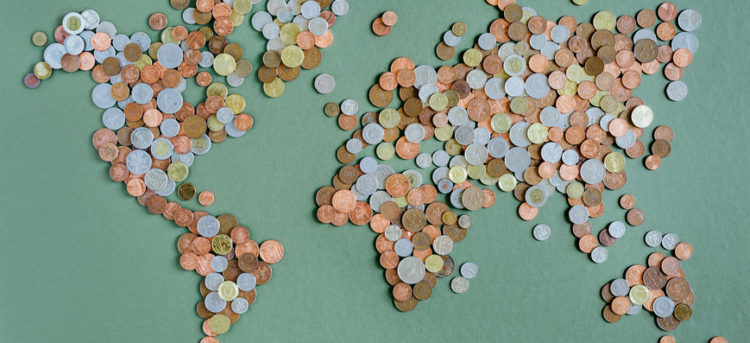Most headlines these days are telling us that the economy is strong and the macroeconomic indicators suggest there’s good momentum as we move into 2018. So, has the (mostly) positive economic climate led to a positive “credit economy”?
“Happily for all of us, the economy seems to be perhaps fully rebounded from the recession,” said Kelley Motley, Sr. Director, Analytical Consulting for Experian.
Experian’s State of Credit report from 2017, an analysis of all things credit, details the geographical and generational breakdown of average credit scores, how much credit consumers are using and how they are paying it back.
Learn more: Experian business credit report
On the whole, the analysis gives the economy high marks, showing that consumer credit scores are trending up, as are other important indicators of credit health.
| Credit Snapshot of the Nation | |
| Average VantageScore | 675 |
| Average Number of Credit Cards | 3.1 |
| Average Balance on Credit Cards | $6,354 |
| Average Number of Retail Cards | 2.5 |
| Average Balance on Retail Cards | $1,841 |
| Average Mortgage Debt | $201,811 |
| Average Non-Mortgage Debt | $24,706 |
Credit Scores Have Improved
The average VantageScore was 675 in 2017, up two points from last year. This was the highest average score since 2012, and only four points lower than the pre-recession average of 679 in 2007.
“We know, from previous years, that credit score movement is slow when you are talking about national averages, so even a point or two can show the gains,” said Motley.
Another important discovery in the report was the fact that there were more Americans with very high scores (Super Prime) than very low scores (Deep Subprime). In 2017, 22.3% of Americans had VantageScores between 781-850, up from 19.8% five years ago.
How Is Credit on Main Street?
The consumer credit picture painted above is positive, but how about small businesses? Many small business owners use consumer credit to finance their endeavors.
The Main Street Report, a report developed by Experian and Moody’s Analytics that provides insights on the financial well-being of small businesses, confirmed that credit conditions for small businesses are looking good.
As confidence in the economy has elevated, utilization of credit among small businesses has increased. Credit balances were up 8.8% year-over-year, while available credit increased by 4.5%, according to Experian’s Main Street Report. This doesn’t necessarily point to business owners being overextended when it comes to credit — utilization is often reported based off of statement balances, so a business owner could be paying their credit cards in full and on time consistently and still have a higher utilization purely by putting more expenses on a credit card and then using their interest-free grace period before paying the balance. However, the increased utilization shows business owners are accessing larger portions of their revolving lines of credit.
Consumers Are More Confident Than Ever Before
According to Motley, consumer confidence is a key indicator of how consumers use credit. “If the mindset of consumer is ‘I’m scared or nervous if I can get a job, or not a good job’ they might start hoarding and not spending.”
In November, the Consumer Confidence Index reached a 17-year high. The index is a barometer of the health of the U.S. economy and based on consumers’ perception of current business and employment conditions, and expectations for the next six months.
And of course, a strong economy drives confidence. Jobless claims are near a 45-year low, according to recent Department of Labor data.
Consumer Are Spending, but Are They Paying?
It’s typical that if you have more spending on credit, delinquencies increase as well. However, Motley said the increased delinquency rate was not terribly concerning.
According to State of Credit, 90-day plus delinquencies were at 36% in 2017, up compared to 32% in 2016.
“Delinquencies are still low, especially compared to the during the recession, she said. “They are starting to tick back up, but still lower than they were.”
Late payments are up in most areas of lending, and some analysts say the high credit card delinquencies are the most problematic. Financial Times reported that the big four retail banks (JPMorgan Chase & Co., Bank of America Corp., Wells Fargo & Co., and Citigroup Inc.) had a close to 20% jump in losses from credit cards, and pointed to consumers’ inability to keep up with payments as the reason why. Wells Fargo noted that recent hurricanes in Florida and Texas had an impact on default rates. The S&P/Experian Consumer Credit Default Indices measure the risk of defaults across autos, first and second mortgage and bank cards.
In the latest release, issued Jan. 16, 2018, David M. Blitzer, Managing Director and Chairman of the Index Committee at S&P Dow Jones Indices said, “The default rate on bank cards has been rising consistently since December 2015. Continued low unemployment and low inflation, rising home prices and stock market gains combined with gains in consumer confidence to support strong gains in retail sales in the last four months of 2017. However, the same expansion in consumer spending is now appearing in the bank card default data.”
What’s the Risk?
According to Motley, the biggest sign of risk now is student loan debt, which has shot up over the last four years. Federal Reserve data from November 2017 showed that the 44.2 million Americans with student loan debt owed $1.48 trillion.
Over the last 10 years, the cost of higher education has increased. According to College Board, the estimated cost at a private college (tuition, fees, room and board) for the 2017-2018 school year is $46,950, up from $37,600 in 2007-2008.
Student loan debt can definitely be worthwhile if it leads to future employment and a means to pay it off. However, if students take on the debt, then either don’t graduate or can’t get a job, that debt can become a ball and chain.
The New York Federal Reserve data states that the median salary for recent college graduates – the point at which half earn above and half earn below — stood at $43,000 in 2015, up from $39,992 the previous year.
Another issue with student debt is that many young adults taking on this debt are new to credit. They have not had much experience with managing credit, so delinquencies, followed by fees and extra finance charges, can make their debt load increase quickly, and this extra cost can be hard to handle.
As far as the credit economy, “It’s about as good as it gets,” said Motley, which she said is the prevailing opinion of the credit data “wonks” at Experian. These folks crunch credit data all day long, and they are responsible for the detailed analytics in the State of Credit report.
Tips for Keeping Your Credit Scores High
The credit economy is humming, but that doesn’t mean you should ignore any of the golden rules about managing your credit and keeping your credit scores high.
- Pay your bills on time every month
- Keep your credit utilization low
- Only apply for the credit that you need.
This article was originally written on February 22, 2018 and updated on January 30, 2020.



Have at it! We'd love to hear from you and encourage a lively discussion among our users. Please help us keep our site clean and protect yourself. Refrain from posting overtly promotional content, and avoid disclosing personal information such as bank account or phone numbers.
Reviews Disclosure: The responses below are not provided or commissioned by the credit card, financing and service companies that appear on this site. Responses have not been reviewed, approved or otherwise endorsed by the credit card, financing and service companies and it is not their responsibility to ensure all posts and/or questions are answered.